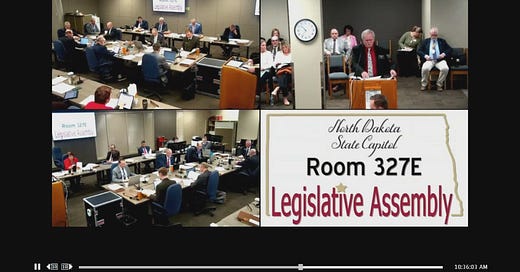(Note To Readers, Legislators, and Media: This article is meant to be a strictly factual article without judgement and opinion. As the alternative bills on property tax reform are introduced, I will provide similar summaries, then offer a compare/contrast of the bills. I am taking this approach because the biggest challenge the legislature will face is the arguments over which plan is better, rather than the details. This would cause the legislature to bog down. It is my intention to help legislators and the public determine what these proposals actually do and what provisions of each proposal make the most sense and offer the most bang for the buck to the taxpayers, within the context of the framework for property tax reform I have previously outlined. Previously, the explanation of Governor Armstrong’s plan was published and can be found here, the explanation of Representative Scott Louser’s plan can be found here, and the explanation Representative Ben Koppelman’s plan can be found here, and the explanation of Representative Nathan Toman’s plan can be found here, and the explanation of Senator Tim Mathern’s plan can be found here.)
HB 1575 is a state reimbursed, percentage-based, taxable valuation reduction for primary residential property, and a state reimbursed taxable valuation reduction for agricultural and commercial property owned by resident individuals or entities domiciled in the state.
The crux of the bill rests on understanding how taxable valuation is calculated in the first place.
Currently, the formula to determine taxable valuations is a little complicated as described by the North Dakota Association of Counties … (which explains it a little better than the Tax Department itself):
To summarize:
Residential property taxable value is 9% of 50% of Market Value
Commercial property taxable value is 10% of 50 of Market Value
Ag Land is 10% of 50% of the value established by the “production value” formula
HB 1575 would create a state-funded offset reimbursement paid to local government equal to 3% (of the 9%) on residential value, 2% (of the 10%) for agriculture, and 1% (of the 10%) for commercial values.
So:
Residential would go from 9% to 6%;
Agricultural would go from 10% to 8%;
Commercial would go from 10% to 9%.
But this change would not be in the valuation formula, it would just be a state-funded offset to the formula.
Got it?
If not, it’s not your fault. The property tax formula is intentionally complicated to make it unapproachable.
This bill is both a simple and complicated approach, that rests on understanding how the current system works.
It also shifts the burden away from residential property and towards commercial and ag property - which the testimony in the hearing alludes to. This exposes the inherent flaw in both this bill and the current system.
In a future article, I will dig into where this bill stands out in some good and valid way, and how it can be modified to be better while addressing the existing fairness problem that it magnifies.













Share this post